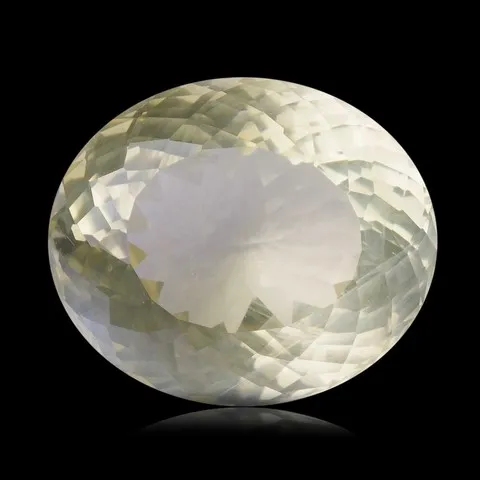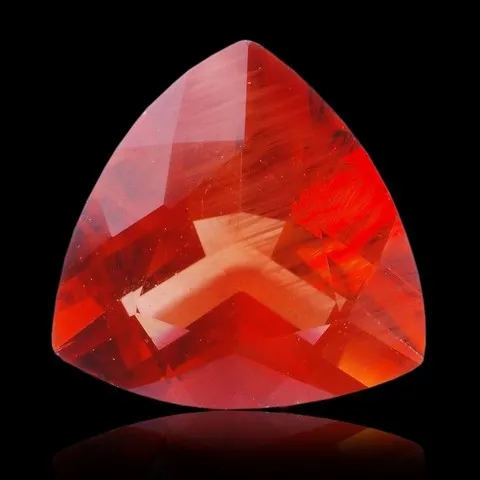ANDESINE
Class : Silicates
Subclass : Tectosilicates
Crystal System : Triclinic
Chemistry : (Na,Ca)(Al,Si)4O8
Rarity : Very common
Andesine belongs to the group of plagioclase feldspars, and constitutes an intermediate sodi-calcic term (Ab30-An70 to Ab50-An50). It is a very unusual constituent of basic volcanic rocks (andesites) and plutonic rocks (diorites), it is also present in certain metamorphic rocks (amphibolites and granulites). It is a mineral which owes its name to the Andean chain because it was discovered in the lavas of Marmato (Colombian Andes). Its crystals are tabular to lamellar, and very commonly appear as the typical polysynthetic twin of plagioclase feldspars. Andesine most often occurs in cleavable, granular or compact masses, whitish to greyish in color, rarely greenish or pinkish. It is a mineral that is sometimes used in jewelry.
Photo : 12.02 ct cut andesine claimed to be from the Congo © Rémi Bornet
Andesine in the World
Twinning
The twins are common around [010] or perpendicular to {010}, giving polysynthetic streaks on {001} or {010} ; many other single and multiple contact twins exist.
Fakes and treatments
Since the early 2000s, significant quantities of red to orange feldspars, presented as natural andesines, have been marketed under various declared provenances, including Tibet, Inner Mongolia (China), and the Congo. However, no authenticated geological source has been confirmed for these localities, with the exception of one site in Tibet (Zha Lin / Yu Lin Gu), visited in 2008 by an international team of gemologists. This site remains controversial, however, due to doubts about the validity of the extractions observed there.
Research conducted by the GIA, Caltech, and other institutions has demonstrated that many red feldspars sold as natural andesines were actually yellow to colorless labradorites from Guyang, Inner Mongolia, which had undergone heat treatment with copper diffusion. This process, reproduced in the laboratory, alters the stone's color through ionic migration at high temperatures (>1200°C).
Stones treated in this way often exhibit abnormal color zoning, halos around metallic inclusions, flux residues, and copper isotopic profiles incompatible with natural genesis. No geological evidence has been found to authenticate an active red feldspar deposit in Inner Mongolia or the Congo. Reported commercial origins cannot be verified, with the partial exception of Tibet.
Finally, laboratories emphasize that despite advanced analytical tools (spectroscopy, chemistry, isotopic analysis), it remains very difficult to definitively determine whether a red andesine has been treated or not, especially in the absence of visible residues or clear zoning.
Photos : Cut andesines claimed to be from the Congo and treated by copper diffusion. Former B. Chatenet collection (CNRS). © Rémi Bornet
References :
ROSSMAN et al. (2011) – The Chinese Red Feldspar Controversy, Gems & Gemology, GIA
MCCLURE et al. (2009) – Identification and Disclosure of Treated Feldspar, GIA
HUGHES, R.W. (2011) – Andesine: Timeline of a Controversy, Lotus Gemology
Hardness : 6 to 6.5
Density : 2.6
Fracture : Irregular to conchoidal
Trace : White
TP : Translucent to transparent
RI : 1.543 to 1.562
Birefringence : 0.009
Optical character : Biaxial (+/-)
Pleochroism : Low
Fluorescence : None
Solubility : Hydrofluoric acid
Magnetism : None
Radioactivity : None




